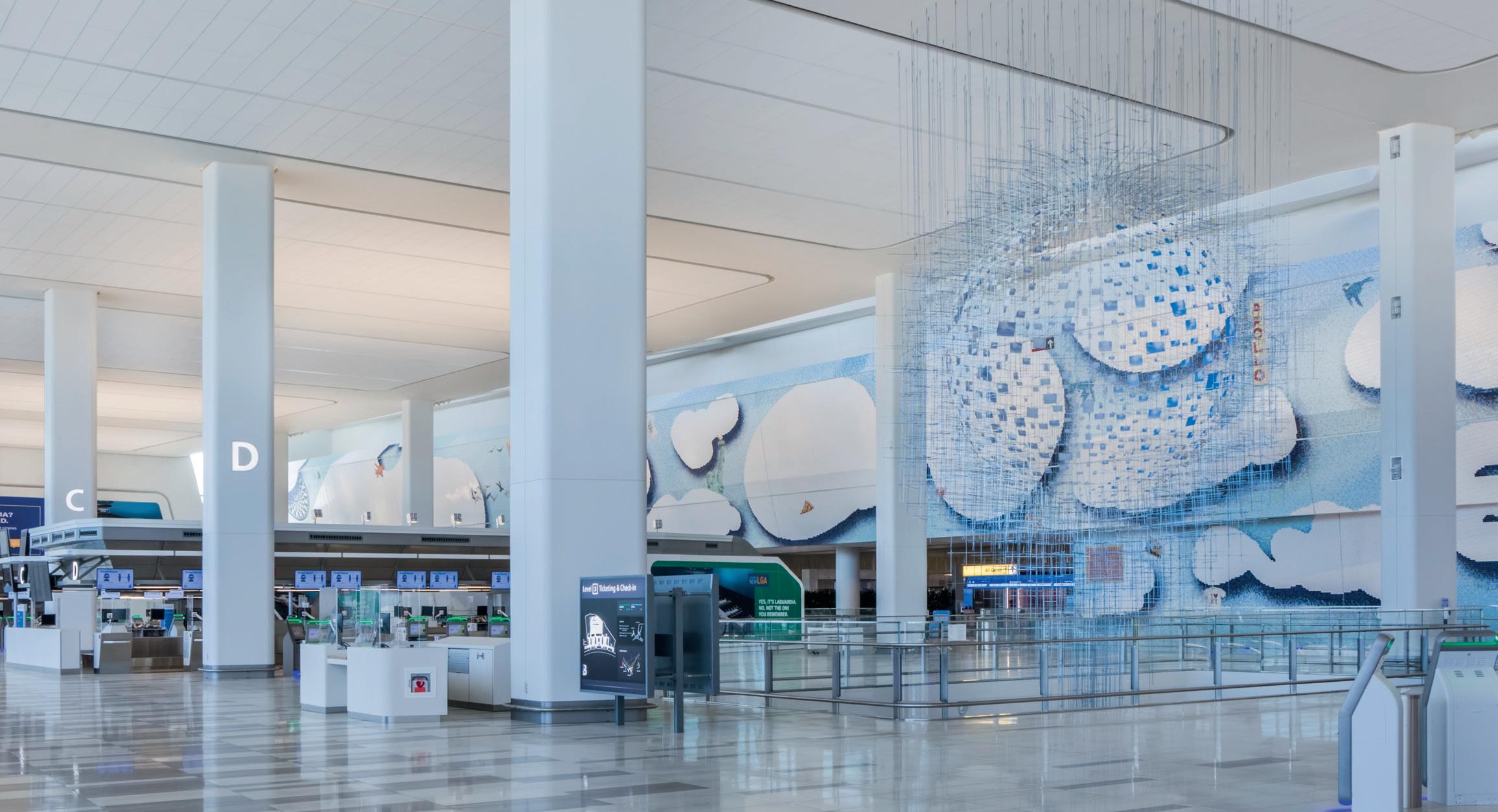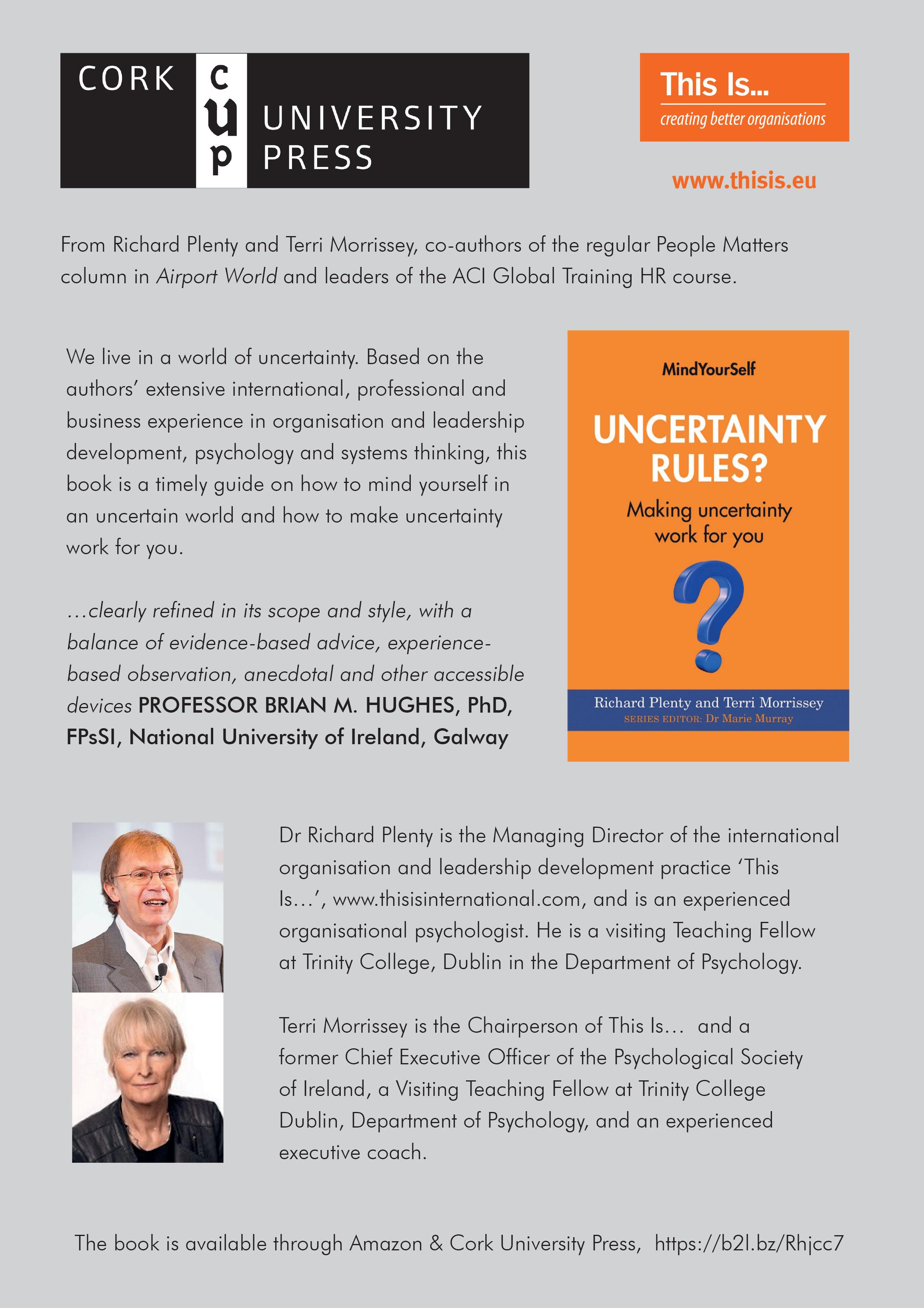
5 minute read
The latest news from ACI’s World Business Partners
Zoeftig unveils new social distancing barrier
UK-based Zoeftig has launched a new social distancing barrier, iZolate, in bid to help combat the spread of COVID-19.
Advertisement
The solution is an adaptable and flexible system that can be retrofitted onto a wide range of seating types in a breadth of configurations.
The patent applied system is constructed of 100% recyclable, lightweight corrugated card that is wipeable and can be installed in a range of orientations to suit the layout of each airport.
For example, the system can be installed on back-to-back units and single rows of seating for symmetry and increased protection, while staggered arrangements across gangways with opposite seating positions can also be adopted to maximise available seat capacity,whilst still maintaining appropriate social distancing.
The visual design of the card shields can also be customised with full colour bespoke prints, including airport logos, warning and advisory symbols, advertising opportunities and gate numbers.
Paul Williams, CEO and president of Zoeftig, said: “As one of the leading manufacturers of airport seating across the globe, we knew we had a responsibility to support our clients in maintaining the safety of their passengers, without impending on the overall design and feel of the airport terminal.
“That’s why our latest social distancing barrier, iZolate, has been specifically designed and manufactured to provide a flexible, cost-effective solution that can be tailored to meet each client’s specific needs.”
iZolate is an extension of Zoeftig’s new range of Infection Control systems, including waste control and touchless hand sanitising stations, which have been designed to further support successful social distancing throughout busy airport terminals.

On the move with Bombardier in Jeddah
Jeddah’s King Abdulaziz International Airport has become the first airport in Saudi Arabia to introduce an automated people mover (APM) system.
Supplied by Bombardier Transportation, the dual-guideway, fully automated INNOVIA APM 300 transports passengers the 1.5-kilometre distance between check-in and the boarding area in Terminal 1.
The APM has a capacity of 4,000 passengers per hour and travels between the terminal’s two APM stations in 85 seconds.
“This type of automated train is only available in limited advanced international airports,” said KAIA’s general manager. Essam bin Fouad Nour.
Multi-national construction company, Saudi Binladin Group, was the contractor responsible for the design and construction of the infrastructure.
Bombardier Transportation – awarded the contract by Saudi Arabia’s General Authority of Civil Aviation (GACA) – designed and supplied all system-wide electrical and mechanical (E&M) elements for the new transit system, including ten INNOVIA APM 300 cars with CITYFLO 650 automatic train control technology for driverless operation. In addition it provided project management, systems engineering and integration, testing and commissioning.

Listening and learning
Ville Levaniemi, executive vice president and co-founder of experience management company, HappyOrNot, discusses the importance of airports listening to their customers.
The nature of travel is changing. Passengers are demanding more, not just from their destination, but from the journey itself. As we enter the 2020s, airport customers increasingly expect a fulfilling and seamless journey.
To meet this demand, airports are increasingly recognising the value in measuring and quantifying the traveller’s endto-end journey, and, from this, drawing conclusions about where and how their services can be improved.
By listening to passengers in the exact moment of their experience, the real-time data and insights that follow enable transport hubs to optimise operations across the entire travel experience, from the minute that traveller steps through the sliding door.
Giving the airport customer a voice through dedicated feedback tools is so much more than just a way to allow passengers a chance to vent, as it can (wrongly) be viewed; one angry tweet or online review will never present the full picture.
Listening to the tens of thousands of people who go through the airport experience first-hand, every day, has enormous potential to empower transport hubs. The insights enable airport operators to make informed choices and evaluations of very specific areas of their operations, even by time of day, and day of week.
Being able to gauge customer satisfaction levels on a grand scale provides invaluable insight into the airport experience as a whole: highlighting the areas, times, or processes that negatively or positively impact a journey.
Take queuing, for example. When people envisage an airport, queuing is an aspect that will likely immediately spring to mind. From check-in, to security, to baggage reclaim, many travellers will tell you that queueing is an unavoidable element of flying.
But queues, like so many other elements of the travel experience, can be managed by the airport itself. Listening to real-time feedback from customers can identify and correct bottlenecks and issues, and thereby foster efficiency.
To illustrate how granular and powerful listening to customer feedback can be, let’s take a simple example from the data analysed by my own company, HappyOrNot, an experience management solution that enables transport hubs to gather and act on big data.
The anonymised data from our thousands of terminals positioned at key points throughout airports around the world paints an interesting global picture of the airport customer experience.
Returning to the theme of queueing, our data shows that the airport check-in process worldwide has an average happiness score of 78% (positive customer feedback) midweek, but dips to 75% on weekends. Naturally, this mirrors the preference of holidaymakers to go abroad weekend-to-weekend, but it underlines the precision and power of employing tools to understand and quantify how passengers are genuinely feeling.
Our data also shows that customer satisfaction levels have improved year-on-year worldwide, with a distinct increase in overall customer happiness. So, clearly, airports are understanding the importance of improving each stage of the customer journey and giving passengers a voice.
Listening to customers is so much more than giving them a chance to vent, it’s a chance to empower all parties in the ecosystem to collaborate in improving the passenger experience, from take-off to landing, and back again.










